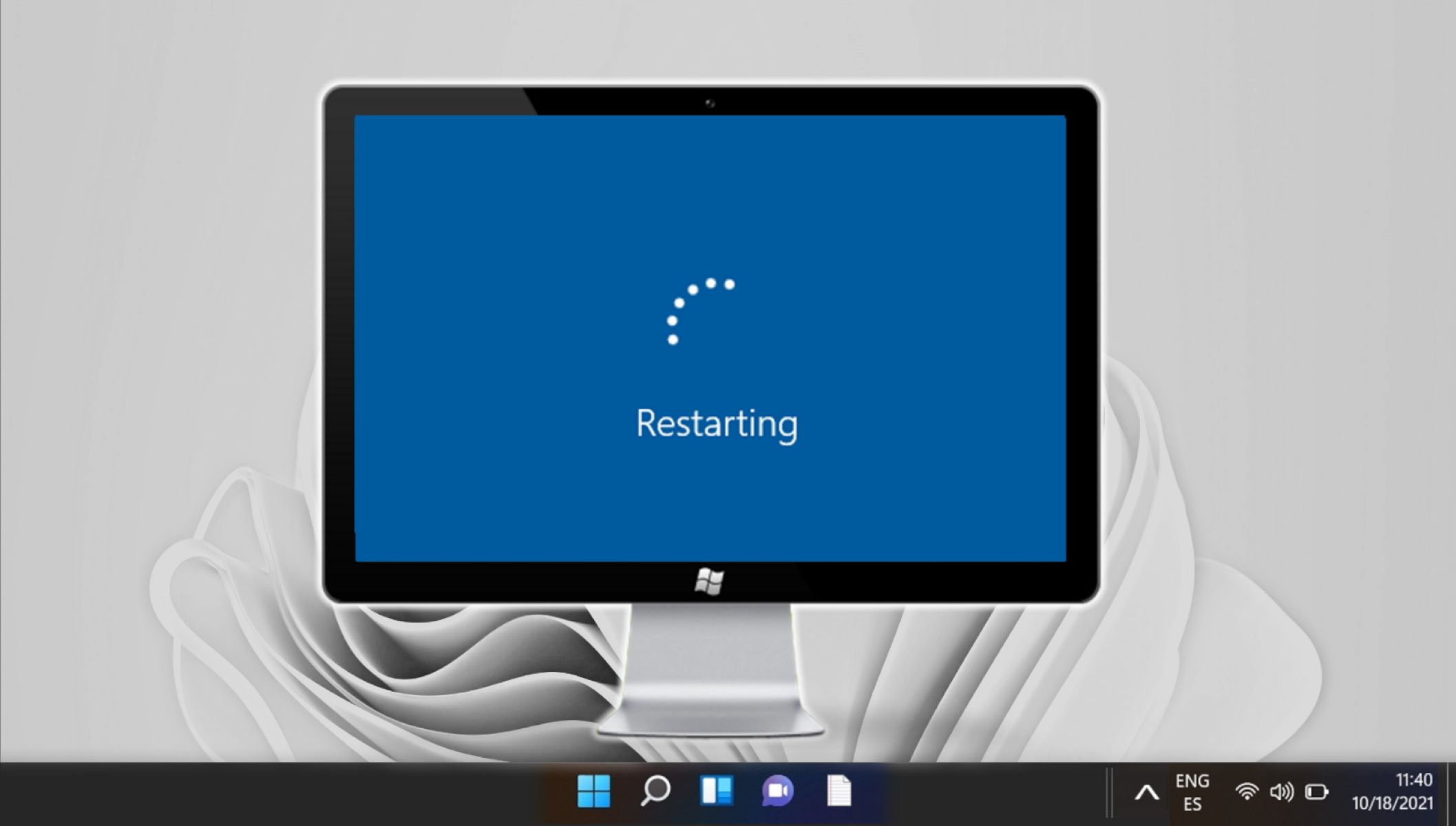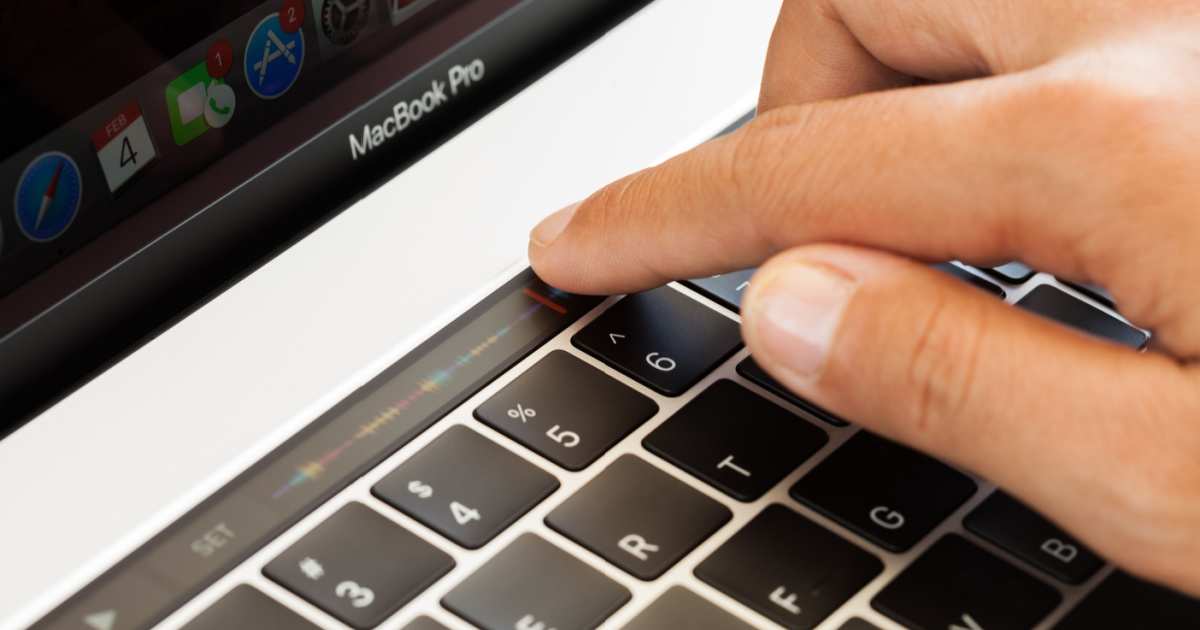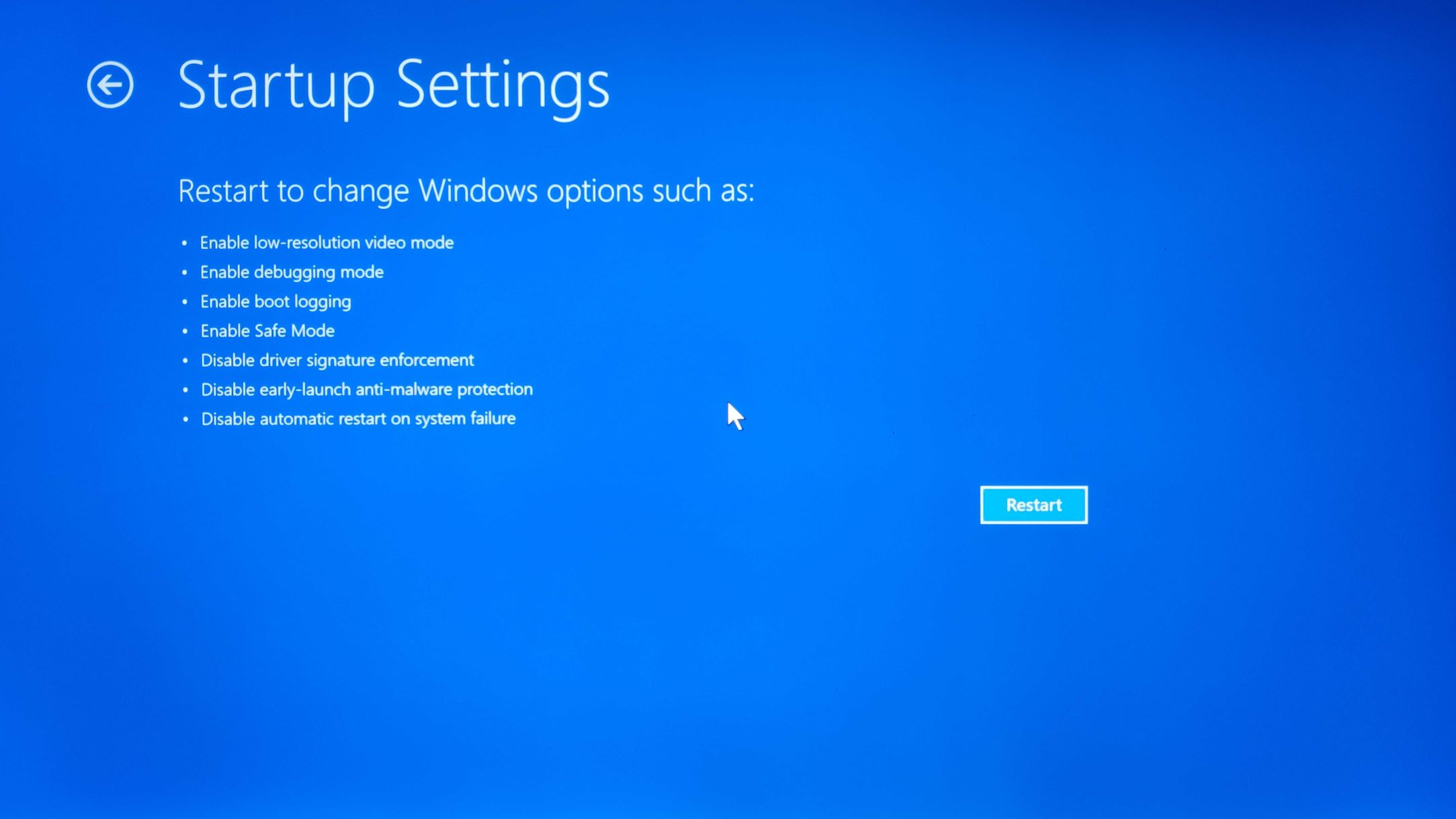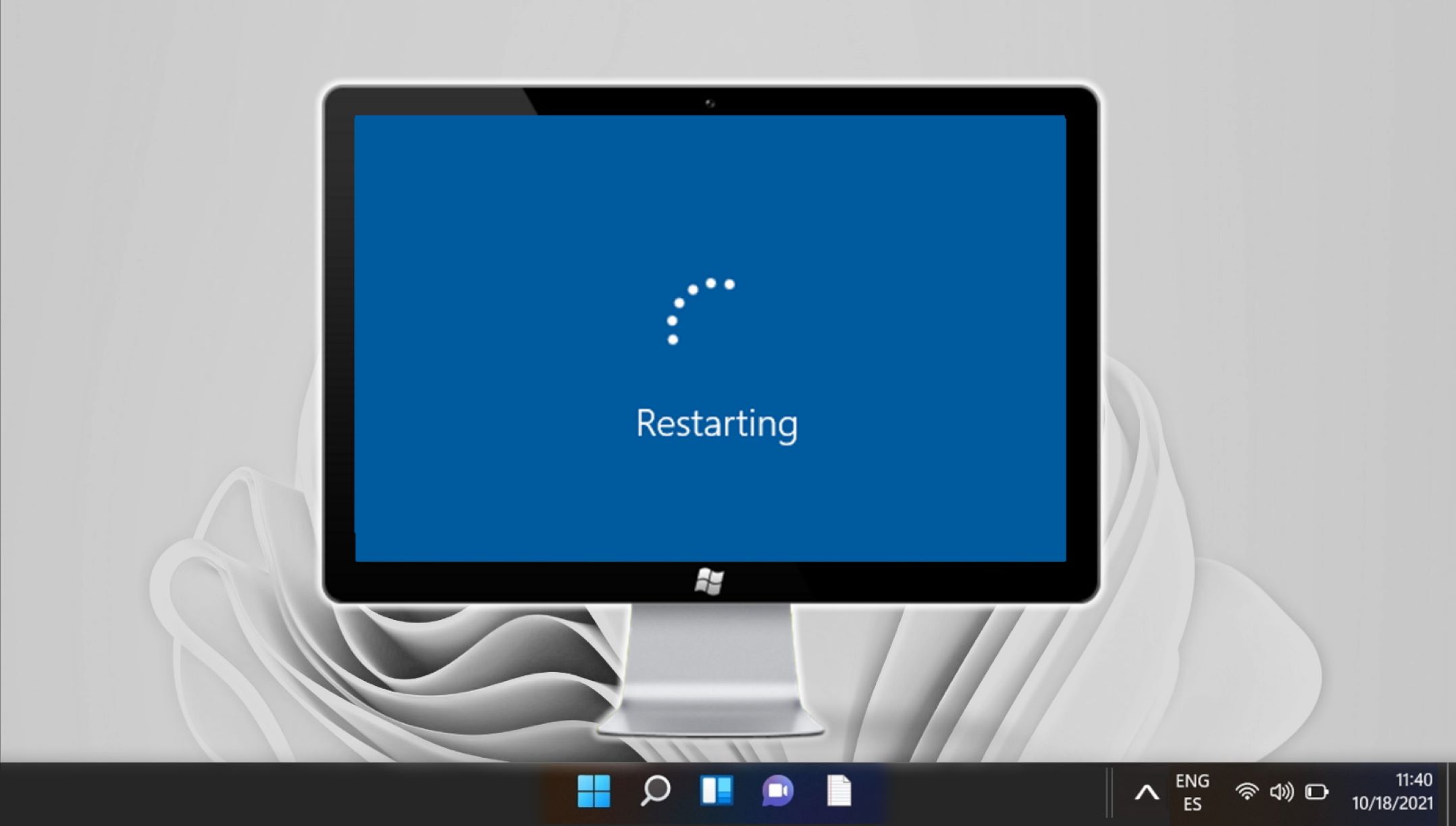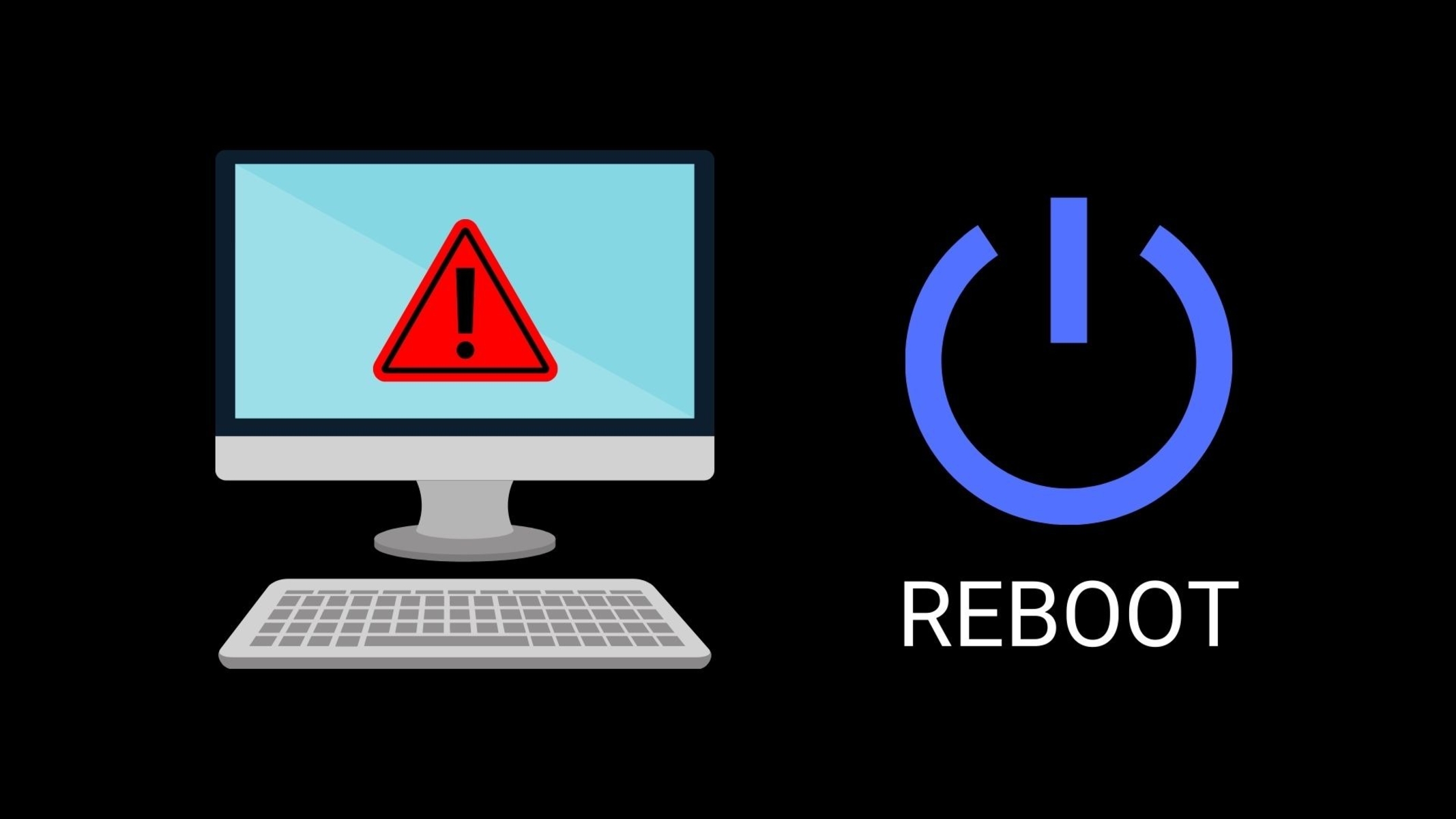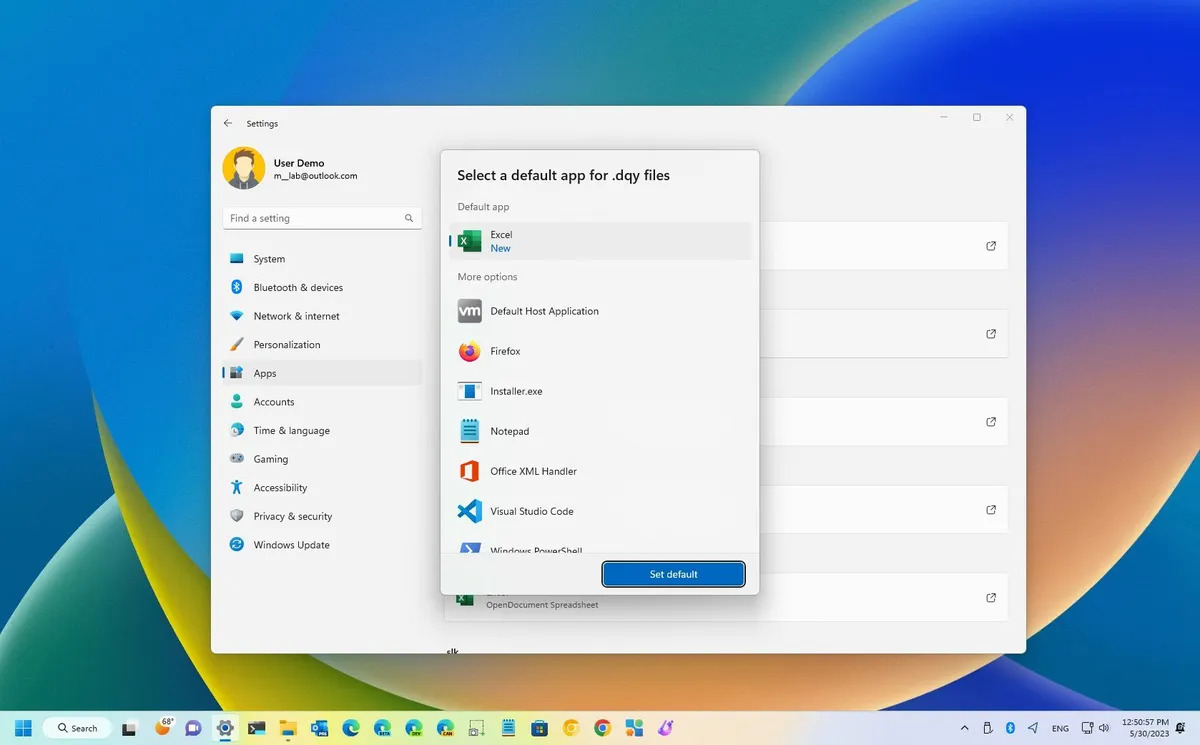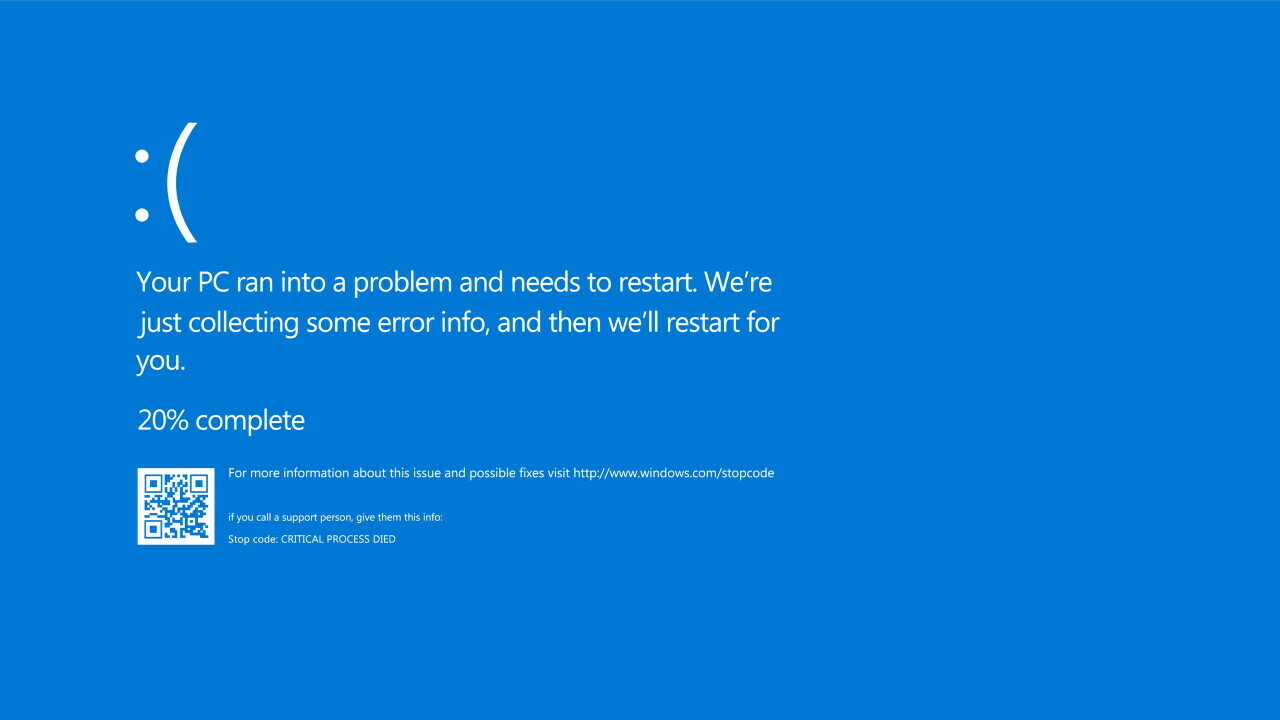Introduction
Welcome to our guide on how to restart a Windows computer. Restarting your computer is a common troubleshooting step and can help resolve various issues like software glitches, performance problems, and system updates. Whether you’re a new Windows user or someone looking for a refresher, this article will provide you with several methods to restart your computer effectively.
Restarting a computer allows it to shut down all running programs and processes and then start them up again from scratch. This can clear out any temporary files, release any stuck resources, and refresh the operating system, leading to improved performance and stability.
Before we delve into the different methods to restart your Windows computer, it’s crucial to save any unsaved work and close all running programs. Restarting your computer abruptly without doing so can result in data loss and potential damage to files.
In the following sections, we will guide you through various ways to restart your Windows computer, ranging from the simple and commonly used methods to more advanced options for power users. Whether you prefer using the Start menu, keyboard shortcuts, command prompt, or system settings, we’ve got you covered.
So, let’s get started and explore the different ways you can restart your Windows computer.
Step 1: Using the Start Menu
One of the easiest ways to restart your Windows computer is by using the Start menu. Here’s how:
- Click on the Start button, typically located in the bottom left corner of the screen.
- From the Start menu, select the Power option. This will reveal a submenu.
- Click on Restart from the submenu. This will initiate the restart process.
- Your computer will begin shutting down all programs and processes and will then automatically restart.
It’s important to note that if your computer is experiencing any issues or unresponsive programs, using the Start menu to restart may not be effective. In such cases, you can try using alternative methods mentioned in subsequent steps.
Restarting your computer using the Start menu is a straightforward method that can be easily performed by anyone, making it a convenient option for most users. However, if you prefer using keyboard shortcuts or want to explore advanced options, continue reading to learn more.
Step 2: Using the Ctrl+Alt+Del Shortcut
Another quick and effective way to restart your Windows computer is by using the Ctrl+Alt+Del keyboard shortcut. This method can help in situations where your computer is frozen or experiencing unresponsive applications. Follow these steps:
- Press the Ctrl, Alt, and Delete keys simultaneously on your keyboard. This will open the Windows Security screen.
- On the Windows Security screen, click on the Power icon, usually located in the bottom right corner.
- A menu will appear with several options. Select Restart from the menu.
- Your computer will begin the restart process, closing all running programs and processes before rebooting.
The Ctrl+Alt+Del shortcut provides a direct way to access the Windows Security screen, allowing you to easily restart your computer. This method is particularly useful when your system becomes unresponsive, as it bypasses any frozen applications and initiates a clean restart.
It’s worth noting that the Ctrl+Alt+Del shortcut can also be used to access additional options like Task Manager, Lock Screen, and Sign Out. However, for restarting your computer, follow the steps outlined above.
Now that you’ve learned two simple methods to restart your Windows computer, let’s explore more ways to accomplish this task in the following steps.
Step 3: Using the Shutdown Option in the Power Menu
If you prefer a more traditional approach to restarting your Windows computer, you can use the Shutdown option in the Power menu. The Power menu provides various power-related options, including restart. Here’s how to use this method:
- Click on the Start button, typically located in the bottom left corner of the screen.
- From the Start menu, click on the Power icon. This will open a menu with power-related options.
- Click on the Shutdown option to reveal a submenu.
- Select the Restart option from the submenu. Your computer will now begin the restart process.
The Shutdown option in the Power menu provides a convenient way to restart your computer, especially if you also want to explore other power-related functions like sleep or hibernate. This method is recommended for users who prefer using the mouse and graphical interface rather than keyboard shortcuts.
By using the Power menu to restart your computer, you ensure that all running programs and processes are properly closed before initiating the restart. This can help prevent potential data loss or system instability.
Now that you know how to restart your computer using the Power menu, let’s explore additional methods in the following steps.
Step 4: Using the Command Prompt
If you’re comfortable with using the Command Prompt, you can restart your Windows computer using a simple command. Follow these steps to use the Command Prompt method:
- Press the Windows Key + R on your keyboard to open the Run dialog box.
- Type “cmd” and press Enter to open the Command Prompt.
- In the Command Prompt window, type “shutdown /r” and press Enter.
- Your computer will display a notification confirming your restart command, and it will begin the restart process.
The Command Prompt method provides a more advanced way to restart your computer and is particularly useful for power users and those comfortable with using command-line tools. It allows for greater control and customization when initiating a system restart.
Using the “shutdown /r” command instructs your computer to restart, ensuring that all running programs are closed, and system processes are properly terminated. This helps maintain the overall stability and performance of your Windows computer.
Note that the Command Prompt method requires administrative privileges. If you’re using a standard user account, you may need to provide administrator credentials or switch to an administrative account to use this method.
Now that you’re familiar with the Command Prompt method, let’s explore another command-line option in the next step.
Step 5: Using the PowerShell Command
If you prefer using PowerShell over the Command Prompt, you can also restart your Windows computer using a PowerShell command. PowerShell provides an extensive scripting environment with advanced capabilities. Here’s how to use this method:
- Press the Windows Key + R on your keyboard to open the Run dialog box.
- Type “powershell” and press Enter to open the PowerShell command-line interface.
- In the PowerShell window, type “Restart-Computer” and press Enter.
- Your computer will display a confirmation message and will begin the restart process.
The PowerShell command “Restart-Computer” allows you to initiate a computer restart directly from the PowerShell interface. This method provides more flexibility and control for power users and system administrators who work with PowerShell scripts.
Using PowerShell to restart your computer ensures that all running processes are terminated properly and the system restarts in a controlled manner. This can help maintain the stability and efficiency of your Windows machine.
Similar to the Command Prompt method, using PowerShell may require administrative privileges. If you’re using a standard user account, you may need to provide administrator credentials or switch to an administrative account to use this method.
Now that you’ve learned how to restart your computer using PowerShell, let’s explore a couple more methods in the following steps.
Step 6: Using the Restart Shortcut on the Desktop
If you prefer a quick and convenient way to restart your Windows computer without navigating through menus or using keyboard shortcuts, creating a restart shortcut on your desktop can be a handy solution. Follow these steps to create and use a restart shortcut:
- Right-click on an empty space on your desktop, and select New from the context menu.
- From the submenu, click on Shortcut. This will open the Create Shortcut wizard.
- In the location field, enter the following command: “shutdown /r /t 0“.
- Click Next and give the shortcut a name, such as “Restart”.
- Click Finish. You will now have a restart shortcut on your desktop.
- Double-click on the restart shortcut whenever you want to restart your computer. Your computer will immediately begin the restart process.
The restart shortcut on your desktop provides a convenient and accessible way to restart your Windows computer with just a double-click. This method saves you time and the hassle of navigating through menus or using keyboard shortcuts.
By using the “shutdown /r /t 0” command in the shortcut, you instruct your computer to restart (/r) immediately and with no delay (/t 0). This ensures a quick and efficient restart process without any unnecessary waiting time.
If you don’t want the shortcut to be visible on your desktop, you can always move it to a different location or create a new folder to store all your custom shortcuts.
Now that you know how to create and use a restart shortcut on your desktop, let’s explore one more method in the next step.
Step 7: Using the Restart Option in the System Settings
If you prefer accessing system settings to control various aspects of your Windows computer, the Restart option in the System Settings provides a simple way to restart your device. Follow these steps to restart your computer using this method:
- Click on the Start button, usually located in the bottom left corner of the screen.
- Click on the Settings icon (shaped like a gear), which will open the Windows Settings page.
- In the Windows Settings page, click on the System option.
- In the left-hand menu of the System page, click on Power & Sleep.
- In the right-hand pane, you will find the Additional power settings link. Click on it to open the Power Options window.
- In the Power Options window, select Restart from the list of available power plans or system settings.
- Click on the Restart button to initiate the restart process. Your computer will begin shutting down processes and will automatically restart.
The Restart option in the System Settings provides a user-friendly interface for restarting your Windows computer. This method allows you to have more control over power-related settings and can be helpful if you want to fine-tune your device’s power management.
By accessing the System Settings, you can also explore additional options like sleep, hibernate, power plans, and more. This makes the System Settings a comprehensive tool for managing various aspects of your Windows computer.
Now that you’ve learned how to restart your computer using the Restart option in the System Settings, you have successfully explored multiple ways to restart your Windows machine.
Conclusion
Restarting your Windows computer is a fundamental troubleshooting step that can help resolve various issues and improve performance. In this guide, we explored several methods to restart your computer effectively, catering to different user preferences and scenarios.
We started with the simple and commonly used method of using the Start menu. This method is convenient for most users and provides an easy way to initiate a restart. We then moved on to using the Ctrl+Alt+Del shortcut, which is especially helpful in situations where your computer becomes unresponsive.
We also covered the option of using the Shutdown option in the Power menu, providing a more traditional approach to restarting your computer. Additionally, we explored the Command Prompt and PowerShell methods, offering more advanced options for power users and administrators.
For those looking for a quick and accessible solution, we discussed creating a restart shortcut on the desktop. This method allows for a simple double-click to restart your computer without the need for navigating menus or using keyboard shortcuts.
Finally, we explored the Restart option in the System Settings, which provides a user-friendly interface and additional power-related settings to manage your computer’s restart process.
With these various methods at your disposal, you can choose the one that suits your preferences and requirements. Remember to save any unsaved work and close all running programs before initiating a restart to avoid data loss.
Whether you’re a novice Windows user or an experienced power user, knowing how to restart your Windows computer using different methods gives you the flexibility and control to manage your device effectively.







